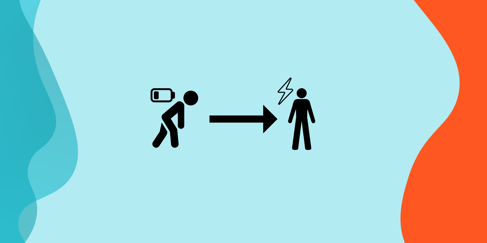Written By:
Kseniya Dobrovolsky
How many hours of ads do you think you have watched in your lifetime thus far? I’m guessing the number is quite bigger than you can count on your hands. All those obnoxious, unamusing ads playing before a video or that tedious pop up that continuously reappears on a page can make anyone go crazy. It’s no wonder that today’s consumers are turning to ad blockers to stop the disruption or steering clear of websites that have them.
Take this phrase into consideration: “Consumers have more power than ads and marketers do.”
Now that’s what I call a bold statement.
According to HubSpot’s State of Inbound Report, this might just be the case in today’s marketing world. Research shows that only a low 40% of people click on an advertisement because it was actually interesting to them. As a marketer this news may scare you—but don’t quit your job just yet.
Instead of fearing these results, take charge by learning about the types of ads your audience is tired of seeing and instead replacing them with ones they’ll be talking about the next day.
Read below about these 5 types of ad nightmares to avoid.
1. Pop-Up Ads
According to the HubSpot Report, pop-ups are among the most hated of adverts. In fact, 63% of those surveyed stated that pop-up online advertising generated the most negative experience. So why do marketers continue to use pop-ups on websites? Through clever pop-up placement and overlaying effects, pop-ups actually work. Surprising, huh?
Instead of creating a pop-up that opens a new window, smart marketers have designed ways to still use them without its annoyance. So to replace the old school pop-ups, today’s marketers effectively capture user’s attention by letting them appear after a certain amount of time or after a user performs a certain action. Additionally, pop-ups may not cover the entire page and simply slide-in on the bottom. Incorporating an easy to close button can also let your users know that you are not forcing an interaction.
This clever and relatively easy to implement strategy can be effective in capturing the viewer’s’ attention and collecting extremely useful information such as email addresses or special offers.
Helpful Tip: Try using A/B testing to see which type of pop-up best resonates with your audience.
2. Mobile Phone Ads
Following closely behind pop-up ads, mobile phone ads are found to be as equally annoying with about 70% of those surveyed saying that they “disliked them.” Why do people hate mobile phone ads? Think about it.
Today, people are too busy for ads. Your consumers don’t have time to kill by trying to click out of an unnecessary ad or try to select from the drop down menu that “No, they are not interested.” Today’s marketers are easily frustrated by these ads because they can make loading the page that much slower or have the ads take them to an unwanted landing page.
To avoid instant frustration, create mobile ads with a neutral experience. Typically, users expect these types of ads or they simply don’t disrupt the consumer browsing experience. Neutral ads are those which relate to the content, have clever call-to-actions and offer the user an easy chance to exist if it is of disinterest.
3. Online Video Ads Before Content
Get ready for this: 82% of individuals have closed a browser or existed a webpage because of an auto playing online video ad. As a marketer who regularly incorporates these ads, you shouldn’t completely get rid of them based on this statistic. Yes, people hate these ads but there are ways to make them attractive to viewers.
Instead of making this “the worst” experience for a viewer, try incorporating a few techniques into your own strategy. Embed a “Skip” button after five seconds which will allow users the chance to decide for themselves whether they want to continue watching or if they would prefer to skip to their content. Additionally, only use relevant ads. This may seem obvious but many companies use ads before videos that are completely unrelated. This means you must take more time to generate more creative ads to target a specific type of audience.
Taking these tips into consideration can offer your video audience and much more comforting, engaging experience.
4. Direct Mail Ads or Promotions
Aka the junk mail. Aka those emails that quickly get sent to the trash. Stay away from those.
Why? Direct mail offers scream “hacky salesmen.” Those emails labeled “Important Information Concerning Your Account” or “Real Savings, Right Now” do not work for today’s consumers. In fact, 48% of those surveyed for the HubSpot Report state that their opinion of the company they normally interact with would change if they were to receive this type of email.
Instead, consumers are attracted to emails that educate them on relevant topics of interest and those that add a touch of humor in the subject line. This “pull” approach emphases helpful, personalized content instead of the pushy approach of a forced, spam worthy direct mail.
To avoid these types of emails while still using email marketing, send emails that use best practices of clear call-to-actions, links to personalized downloadable content and unsubscribe button options. This could be done in the form of a newsletter subscription. By promoting your emails on various places such as your website and social media platforms, consumers can have the chance to show their interest by subscribing to receive your offers, weekly newsletters or any other content that you want to offer. This is an easy way to know that those individuals have shown curiosity towards your company and would want to be further educated.
5. Sponsored Facebook Ads
Of those surveyed for the report, 85% stated that they have encountered sponsored Facebook ads and 40% of individuals reported to “dislike them.” These statistics are understandable. Scrolling through your timeline is unenjoyable if every other post is a sponsored ad.
To make consumers have a pleasant experience, provide them with ads that matter to them. To do so, consider using Facebook’s tip of segmenting your ad based on a specific demographic, personal interests, etc. These types of filters will allow your ads to be displayed to those individuals who may be more interested in your business. Thus, this will provide for a higher click-through rate and a better chance to catch the attention of your next potential buyer.
Remember that Facebook allows you to choose the best ad for your business. This means that your advertising goal should match the type of ad you want to present.
Conclusion
A staggering 91% of respondents say ads are more intrusive today compared to two or three years ago. Don’t be a statistic.
Stop posting sponsored posts that are irrelevant to your consumers—they are not buying it. These failed attempts of making consumers see right through your ads is a waste of both their time and yours. Instead of creating annoying, intrusive advertising types such as the ones listed above, incorporate some of our ideas to replace them.
Ads are content so make them good content and people will be willing to view them.







